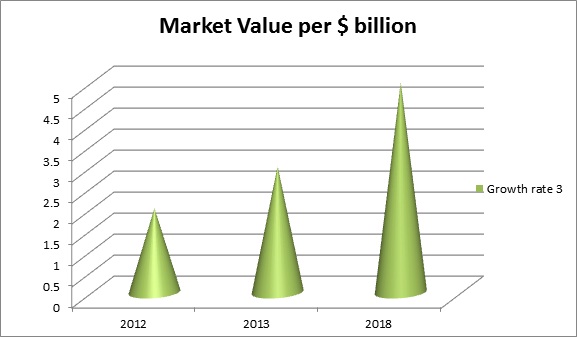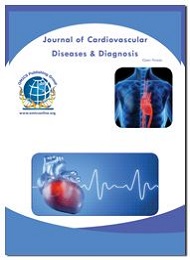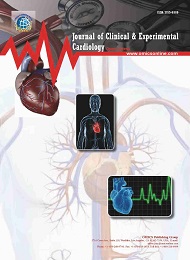Theme:
Cardiac Surgery 2018
Cardiac Surgery 2018 is a conference on Cardiology designed to provide diverse and current education that will keep medical professionals abreast of issues affecting the prevention, diagnosis, treatment of cardiac & thoracic disorders. Cardiology conference will help in networking, B2B partnering between professionals and academics. We have handled many successful events, cardiology conferences help to build good relations between the researchers and companies. In recent years, cardiac & thoracic devices have been developed which helped for replacement, repair therapy for the treatment of cardiac and thoracic disorders. Robotic surgeries are introduced for the cardiac & thoracic surgery which has been beneficial in the wide range. Cardiothoracic surgeries market is been developing every year. Most importantly the global market for cardiovascular surgical devices was valued at $29.7 billion in 2012. This market is expected to reach nearly $31.7 billion in 2016 and nearly $47.2 billion by 2018. Cardiac surgery is the field of medicine involved in treatment of diseases affecting organs inside the thorax generally treatment of conditions of the heart and lungs. The field incorporates therapeutic analysis and treatment of intrinsic heart imperfections, coronary vein infection, heart disappointment, valvular coronary illness and electrophysiology. There are many procedures used for the treatment which also involves the implantation procedures.
Conference will be organized around the theme: "New Frontiers in the field of Cardiac Surgery".
Conferenceseries LLC Ltd organizes a conference series of 1000+ Global Events inclusive of 300+ Conferences, 500+ Upcoming and Previous Symposiums and Workshops in USA, Europe & Asia with support from 1000 more scientific societies and publishes 700+ Open access journals which contains over 30000 eminent personalities, reputed scientists as editorial board members.
Why to attend???
Annual Meeting on Cardiac Surgery is a unique forum to bring worldwide distinguished academics in field of cardiology. Cardiologists, researchers, public health professionals, scientists, industry researchers, scholars to exchange about state of art research and technologies.
Target Audience:
Cardiology Students, Scientists
Cardiothoracic Researchers
Neuropharmacology Faculty
Cardiac Surgery Researchers
Medical Colleges
Cardiothoracic Associations and Societies
Business Entrepreneurs
Training Institutes
Manufacturing Medical Devices Companies
Cardiac Surgery: To understand how cardiac surgery works, it is helpful to know something about the anatomy of the heart. The heart is a muscle containing four compartments or chambers that separate oxygen-poor blood from oxygen-rich blood. The atria are the top chambers. They receive blood from the body. The ventricles are the bottom chambers. They pump blood out to the body. Oxygen-poor blood enters the right atrium, and then moves through a valve to the right ventricle. It is then pumped out of the right ventricle to the lungs where it picks up oxygen. The oxygen-rich blood returns to the left atrium of the through the pulmonary vein, flows through a valve to the left ventricle, and is then pumped into the aorta. The aorta is the only artery carrying blood out of the heart. Smaller arteries branch off and carry blood to the rest of the body from this very large, thick, long artery. The first arteries to branch off the aorta are the coronary arteries. These carry a continuous supply of oxygen-rich blood to the heart.
- Paediatric Cardiac Surgery
- Aortic Surgery
- Valve Replacement
- Vein Stripping
Cardiology: Cardiology is a branch of medicine which deals with the study of disorders of the heart as well as parts of the circulatory system. This field includes medical diagnosis and treatment of congenital heart defects. Cardiologists are medical doctors who specialize in heart and blood vessel disease. They help in preventing the disease as well as diagnose and treat those who already have them.
Cardiology is divided into several fields such as:
- Paediatric cardiology
- Adult cardiology
- Electrophysiology
- Echocardiography
- Molecular Cardiology
- Interventional Cardiology
- Geriatric Cardiology etc..,
Peripheral arterial disease: Peripheral artery disease (PAD) is a disease in which plaque builds up in the arteries that carry blood to the head, organs and limbs. Fat, cholesterol, calcium, fibrous tissue, and other substances in the blood make up the plaque. The most common symptoms of PAD are cramping, pain or tiredness in the leg or hip muscles while walking or climbing stairs. This pain goes away with rest and returns on walking again. The condition where plaque builds up in the body's arteries is called atherosclerosis. Over time, plaque can harden and narrow the artery which limits the flow of oxygen-rich blood to the organs and other parts of the body. People with peripheral arterial disease are at a higher risk of coronary artery disease, heart attack or stroke. If left untreated, PAD can lead to gangrene and amputation.
Arrhythmias: An arrhythmia is the abnormal rhythm of the heart which may feel like fluttering or a brief pause. It may be so brief that it doesn’t change the overall heart rate (the number of times per minute that your heart beats). It can cause the heart rate to be too slow or too fast. Some arrhythmias don’t cause any symptoms whereas others can make the patients to feel lightheaded or dizzy. There are two basic kinds of arrhythmias- Bradycardia, when the heart rate is too slow (less than 60 beats per minute) and Tachycardia, when the heart rate is too fast — more than 100 beats per minute.
Diabetes, Obesity & Stroke: Heart assaults and strokes are generally intense occasions and are chiefly caused by a blockage that keeps blood from streaming to the heart or mind. The condition where blood supply to mind has ceased incidentally, because of development of blood cluster which can be found in a corridor. The most widely recognized explanation behind this is a development of greasy stores on the inward dividers of the veins that supply the heart or cerebrum. The reason for heart assaults and strokes are normally the nearness of a mix of hazard factors. For example, tobacco utilizes undesirable eating routine and stoutness, physical latency and unsafe utilization of liquor, hypertension, diabetes and hyperlipidaemia. The danger of heart stroke can increment from four to five times on the off chance that you have atrial fibrillation. Heart stroke looks for a crisis medicinal consideration.
Stroke is when poor circulatory system to the mind realizes cell end. Long haul hypertension is a noteworthy hazard factor for coronary vein malady, stroke, heart disappointment, fringe vascular sickness, vision misfortune, and endless kidney illness. Hypertension is once in a while joined by side effects, and its distinguishing proof is normally through screening.
Cardiac Hypertension: Hypertension, also known as High Blood Pressure, is a heart disease which refers to the heart conditions caused by elevated blood pressure in blood vessels. The heart working under increased pressure causes some of the different heart disorders. Hypertensive heart disease includes heart failure, thickening of the heart muscle, coronary artery disease, and other conditions. Hypertensive heart disease can cause serious health problems. It is the leading cause of death from high blood pressure.
Cardio-Oncology: Some of the treatments in patients who have been treated for cancer may cause lasting damage to the heart. As a result of chemotherapy or radiation, cardiovascular complications such as premature blockage of arteries of heart, heart rhythm disorders and heart failure may develop. Chemotherapeutic cardiac toxicity is mainly classified into two types: Type 1 chemotherapy-related left ventricular (LV) systolic dysfunction and Type 2 chemotherapy-mediated cardio toxicity.
Cardiothoracic Diseases: Cardiothoracic is relating to the heart and chest or lungs. Atrial fibrillation is an arrhythmia characterized as irregular, disorganized, electrical activity of the upper chambers (atria) of the heart. Atrial Septal Defect, or ASD, is a congenital anomaly of the heart and most ASD's are not serious and can be easily fixed. Coronary artery disease is caused by atherosclerosis of the vessels that supply blood to the heart. Emphysema is a chronic, progressive condition which affects 2.0 million Americans. The mediastinum is a space in the chest that is divided into different sections, where tumours can occur. Thrombosis of coronary arteries occurs when the opening, or lumen, of the artery becomes so small that the blood flow through the narrowed segment slows, allowing the blood to clot in the artery.
Cardiothoracic Anaesthesiology: Cardiothoracic anaesthesiology is a subspecialty of the medical practice of anaesthesiology devoted to the preoperative, intraoperative, and postoperative care of adult patients undergoing cardiothoracic surgery and related invasive procedures. It deals with the anaesthesia aspects of care related to surgical cases of the human chest. These aspects include perioperative care with expert manipulation of patient cardiopulmonary physiology through precise and advanced application of pharmacology, resuscitative techniques, critical care medicine, and invasive procedures.
Implant Devices: Cardiology conference also focuses on Implant Devices. Cardiovascular Implant Devices are been used for the cardio-thoracic disorders. A pacemaker is a medical device that uses electrical impulses, delivered by electrodes contracting the heart muscles, to regulate the beating of the heart. A ventricular assist device (VAD) is an electromechanical circulatory device that is used to partially or completely replace the function of a failing heart. The function of VADs differs from that of artificial cardiac pacemakers. Some VADs are intended for short term use, typically for patients recovering from heart attacks or heart surgery, while others are intended for long-term use (months to years and in some cases for life), typically for patients suffering from advanced congestive heart failure. Implantable cardioverter-defibrillator (ICD) or automated implantable cardioverter defibrillator (AICD) is a device implantable inside the body, able to perform cardio version, defibrillation and pacing of the heart. Lepu Medical, Biotroniks, Boston Scientific, St. Jude Medical, Vitatron, Cameron Health are the major manufacturers of cardiovascular implant devices.
Cardiovascular Pharmacology and Toxicology: Cardiovascular toxicology may be caused due to chemotherapy or due to the medication for the treatment of heart diseases. Cardiovascular Pharmacology deals with the study of drug action which exerts a biochemical or physiological effect on the tissue, cell, organ or organism. The interactions affect normal or abnormal biochemical function. The cardiovascular group is studying the connections between salt intake or obesity on blood pressure control mechanisms. These investigators use state of the art molecular, cellular and integrative approaches to study vascular function and neural control of blood pressure.
Sub Tracks:
- Neurotoxicology
- Drug addiction and alcohol dependence
- Neurodegenerative disorders
- Circadian rhythm disorders
Cardiac Nursing and Healthcare: Cardiac Nurses works with patients who suffer from various conditions of the cardiovascular system. Cardiac nurses help treat conditions such as unstable angina, cardiomyopathy, coronary artery disease, congestive heart failure, myocardial infarction and cardiac dysrhythmia under the direction of a cardiologist. Along with cardiologists cardiac nurses also have to perform some duties such as postoperative care on a surgical unit, stress test evaluations, cardiac monitoring, vascular monitoring, and health assessments. Cardiac nurses work in many different environments, including coronary care units (CCU), cardiac catheterization, intensive care units (ICU), operating theatres, cardiac rehabilitation centres, clinical research, cardiac surgery wards, cardiovascular intensive care units (CVICU), and cardiac medical wards.
Heart Failure and Cardiomyopathies: Heart failure, sometimes known as congestive heart failure, occurs when your heart muscle doesn't pump blood as well as it should. Certain conditions, such as narrowed arteries in your heart (coronary artery disease) or high blood pressure, gradually leave your heart too weak or stiff to fill and pump efficiently. Not all conditions that lead to heart failure can be reversed, but treatments can improve the signs and symptoms of heart failure and help you live longer. Lifestyle changes such as exercising, reducing salt in your diet, managing stress and losing weight can improve your quality of life. One way to prevent heart failure is to control conditions that cause heart failure, such as coronary artery disease, high blood pressure, diabetes or obesity.
Cardiomyopathy is a condition where the heart muscle is not in the usual normal state. Dilated, Hypertrophic and Restrictive cardiomyopathies are the main types of cardiomyopathies. This condition makes it harder for the heart to pump and deliver blood to the rest of the body. Coronary heart diseases can lead to heart failure by weakening the heart muscle over time. The term heart failure doesn't mean that the heart has stopped or is about to stop working. It is a serious condition which requires medical assistance and supervision.
Cardiovascular Medicine: The division of the cardiovascular medicine is committed to the higher levels of the patient care, development and discovery of better treatments for cardiovascular diseases. Cardiovascular is related to the circulatory system, which comprises the heart and blood vessels which carries nutrients and oxygen to the tissues of the body and removes carbon dioxide and other wastes from them. Cardiovascular diseases are conditions which affect the heart and blood vessels.
Cardiovascular Conferences are the most comprehensive provider of cardiovascular services specializing in the prevention, detection, management and treatment of adult cardiovascular diseases. Cardiovascular Medicine Conferences is a platform for postgraduate education and scientific work in the fields of cardiology, angiology, hypertension and cardiac and vascular surgery.
- Cardiovascular Nursing
- Cardiovascular Surgeries
- Cardiovascular Alternative Medicine
- Emergency Medicine
- Diagnosis tests & Procedures in Cardiology
Nuclear Cardiology & Cardiac Computed Tomography: Heart disease is the leading cause of death in the western world. Each year in the U.S.A, more than 500,000 men and women die from coronary artery disease. During the past two decades, major strides have been made in the diagnosis and treatment of heart disease. Nuclear Cardiology has played a pivotal role in establishing the diagnosis of heart disease and in the assessment of disease extent and the prediction of outcomes in the setting of coronary artery disease. Nuclear cardiology studies use non-invasive techniques to assess myocardial blood flow, evaluate the pumping function of the heart as well as visualize the size and location of a heart attack. Among the techniques of nuclear cardiology, myocardial perfusion imaging is the most widely used.
A computed tomography scan commonly called a CT scan or CAT scan — is a test that uses X-rays to view specific areas of your body. These scans use safe amounts of radiation to create detailed images of the body, which can help the doctor to detect any problems. A heart, or cardiac, CT scan is used to view your heart and blood vessels. A heart CT scan may also be called a coronary CT angiogram if it’s meant to view the arteries that bring blood to your heart. The test may be called a coronary calcium scan if it’s meant to determine whether there is a build-up of calcium in your heart.
Clinical Cases in Cardiology: Our all Cardiology conferences has Case Studies act as informative examples to people who might also faces similar problems. Generally, Case Studies in Cardiovascular Medicine, should detail a particular medical case, reporting the background of the patient. They should discuss investigations undertaken in order to determine a diagnosis or differentiate between possible diagnoses, and should indicate the type of treatment the patient underwent as a result. In one piece we can conclude that Case Studies is an useful and informative part of every doctor or physician's medical education.
According to new technical market research report, cardiovascular surgical devices were valued $29.7 billion in 2012 and the market growth has been increased up to $31.7 billion in 2013. BCC Research projects expected the market growth to nearly $47.2 billion by 2018 and register a five year compound annual growth rate (CAGR) of 8.3% from 2013 to 2018.

Cardiovascular disease is the leading cause of death for both men and women in the United States, as well as in many other countries around the world. The American Heart Association estimates that 83.6 million American adults, or more than one in three, have one or more types of cardiovascular disease. Indeed, more Americans die of heart disease than of the combination of all cancers and AIDS.
In 2010, over $7.5 million inpatient cardiovascular operations were performed in the United States alone. During that year, the total inpatient hospital cost for cardiovascular disease was estimated to be $71.2 billion about one quarter to the total cost of U.S. inpatient hospital care. The American Heart Association estimates that the total direct medical cost associated with cardiovascular disease in the U.S. has increased from an estimated $312.6 million in 2009 to almost $1.5 trillion, by 2030.
Although incidence rates of cardiovascular disease in many European and other developed nations were equal to the United States, many developing nations actually have much higher rates of cardiovascular disease. The World Health Organization estimates that 60% of all cardiovascular disease occurs in less developed countries. Recent increase of cardiovascular disease has been fuelled by higher obesity rates in less developed countries. For example, WHO estimates that there are 70 million overweight people in China disability adjusted life years in 1990 to an estimated 82 million by 2020? This increase will be most acutely felt in nations such as Egypt, India and the republics of the former Soviet Union.
Conference Highlights
- Cardiac Surgery
- Cardiology
- Peripheral arterial disease
- Arrhythmias
- Diabetes, Obesity & Stroke
- Cardiac Hypertension
- Cardio Oncology
- Cardiothoracic Diseases
- Cardiothoracic Anaesthesiology
- Implant Devices
- Cardiovascular Pharmacology and Toxicology
- Cardiac Nursing and Healthcare
- Heart Failure and Cardiomyopathies
- Cardiovascular Medicine
- Nuclear Cardiology & Cardiac Computed Tomography
- Clinical Cases in Cardiology
- Cardiothoracic Surgery
To share your views and research, please click here to register for the Conference.
To Collaborate Scientific Professionals around the World
| Conference Date | 2019-09-20 | ||
| Sponsors & Exhibitors |
|
||
| Speaker Opportunity Closed | |||
| Poster Opportunity Closed | Click Here to View | ||
Useful Links
Special Issues
All accepted abstracts will be published in respective Our International Journals.
- Journal of Cardiovascular Diseases & Diagnosis
- Journal of Clinical & Experimental Cardiology
- Cardiovascular Pharmacology: Open Access
Abstracts will be provided with Digital Object Identifier by






